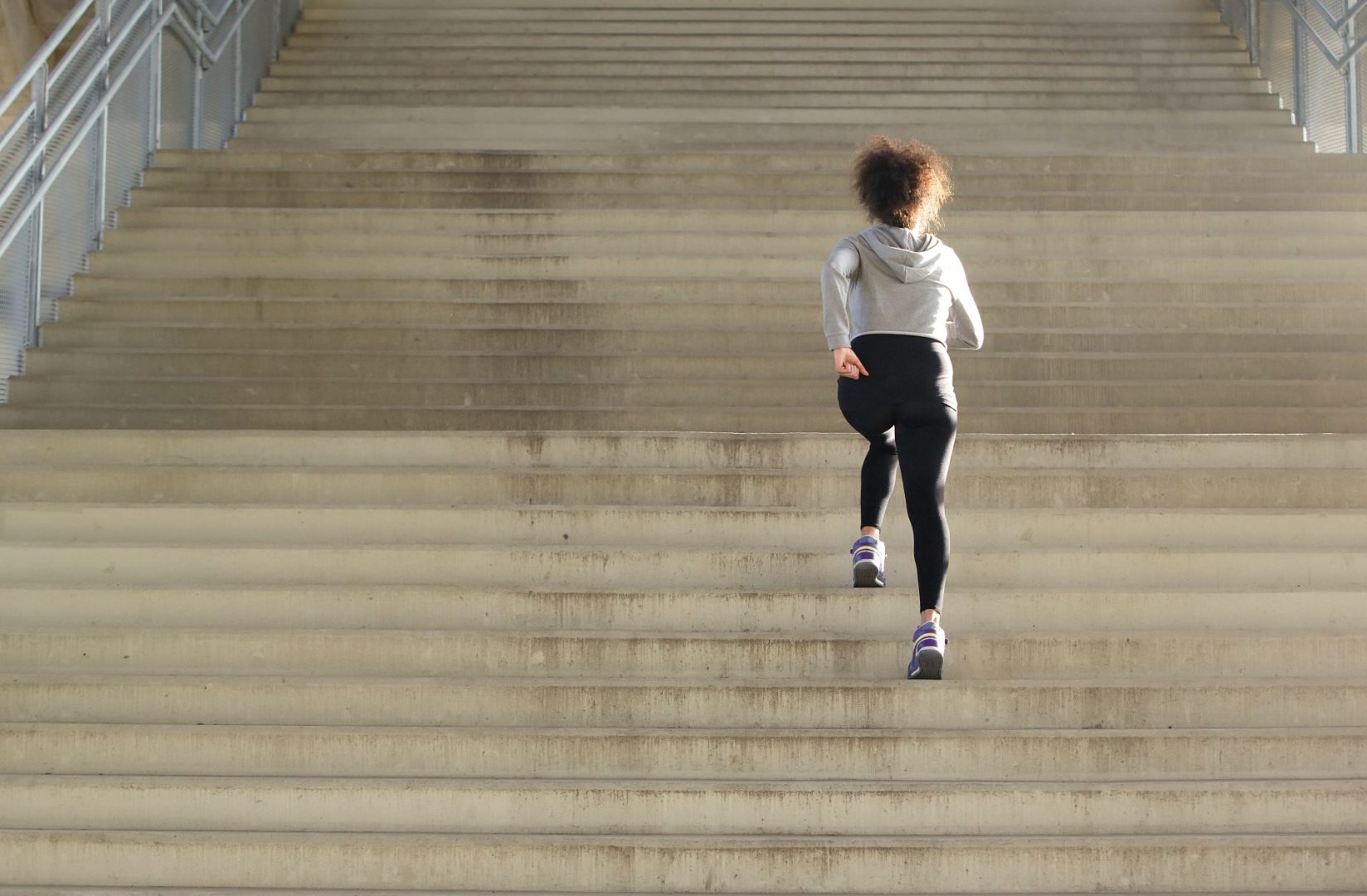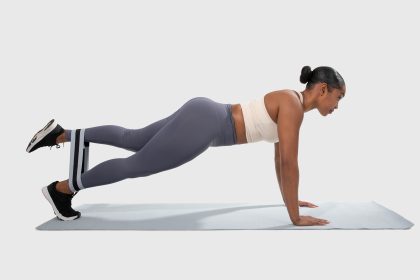The stair climber stands as one of the most effective pieces of cardio equipment for targeting the entire lower body while burning calories at an impressive rate. Unlike traditional cardio machines that primarily focus on endurance, the stair climber engages multiple muscle groups simultaneously, creating a sculpting effect that builds lean muscle while torching fat.
This vertical climbing motion mimics one of the most functional movement patterns humans perform, making it exceptionally effective for building real-world strength and endurance. The constant stepping motion targets the glutes, quadriceps, hamstrings, and calves while engaging the core for stability throughout each movement.
Understanding how to maximize your stair climber workouts through specific techniques and movement variations can dramatically accelerate your lower body transformation. These targeted moves work by adjusting your body position, step patterns, and intensity to emphasize different muscle groups while maintaining the cardiovascular benefits of climbing.
The science behind stair climbing effectiveness
Stair climbing activates large muscle groups in the lower body, requiring significant energy expenditure that leads to both immediate calorie burn and post-workout metabolism boost. The stepping motion engages muscles through their full range of motion, promoting both strength development and muscular endurance.
The vertical nature of stair climbing creates a unique training stimulus that builds functional strength while improving cardiovascular fitness. Each step requires coordinated effort from multiple muscle groups, creating a compound movement effect that maximizes training efficiency and results.
The continuous nature of stair climbing also creates an ideal environment for fat burning, as the sustained effort keeps your heart rate elevated while the muscle engagement promotes lean tissue development. This combination makes stair climbing particularly effective for body composition changes.
1. Deep step power climb
Position yourself on the stair climber with a slower, more deliberate pace than typical cardio sessions. Take deeper steps by allowing the pedals to drop further before pushing through with maximum force. This technique emphasizes the glutes and hamstrings while building explosive power in the lower body.
Focus on driving through your heels rather than staying on the balls of your feet, which shifts the emphasis to the posterior chain muscles. The deeper range of motion challenges the glutes through their full lengthening and shortening cycle, promoting better muscle development and strength gains.
Maintain this deep stepping pattern for 2-3 minute intervals, followed by 1 minute of regular pace recovery. The power emphasis requires more muscular effort, making this technique particularly effective for building lean muscle mass in the glutes and hamstrings while maintaining cardiovascular benefits.
2. Single-leg focus intervals
Alternate between emphasizing one leg at a time during your stair climbing session. Spend 30-45 seconds focusing on pushing primarily with your right leg while allowing the left leg to assist minimally, then switch sides. This unilateral emphasis creates intense muscle activation and helps address strength imbalances.
The single-leg focus technique forces each leg to work harder individually, promoting better muscle recruitment and development. This approach also engages stabilizing muscles more intensely as each leg works to maintain balance and control during the emphasized phases.
Perform 4-6 rounds of single-leg emphasis intervals, ensuring equal work time for both legs. This technique is particularly effective for targeting the quadriceps and glutes while improving unilateral strength and stability that translates to better overall lower body function.
3. Skip-step climbing pattern
Implement a skip-step pattern by taking every other step during your climbing session. This technique requires more explosive power and creates a higher step height that intensely targets the glutes and quadriceps. The increased step height demands greater hip flexion and extension, maximizing muscle engagement.
The skip-step pattern also increases the cardiovascular challenge while promoting better muscle fiber recruitment in the lower body. This technique creates a more intense workout that can be sustained for shorter periods, making it ideal for high-intensity interval training approaches.
Alternate between 1-2 minutes of skip-step climbing and 1-2 minutes of regular stepping to create an interval effect. This pattern maximizes both muscle building and fat burning benefits while adding variety to prevent workout monotony.
4. Lateral step emphasis
Turn your body at a slight angle to the stair climber, alternating between facing slightly left and slightly right during your workout. This lateral emphasis targets the glutes from different angles while engaging the hip stabilizers and outer thigh muscles more intensely.
The lateral position requires increased activation of the gluteus medius and minimus, muscles that are often undertrained in traditional forward-facing cardio exercises. This technique helps create better hip stability and contributes to a more rounded, sculpted appearance in the glute region.
Spend 2-3 minutes facing each direction before switching, ensuring balanced development of all hip muscle groups. This technique adds a three-dimensional element to your stair climbing workout while targeting muscles that contribute to better overall lower body strength and appearance.
5. Reverse stepping intervals
Carefully turn around on the stair climber and perform reverse stepping intervals for 1-2 minutes at a time. This backward motion emphasizes the quadriceps and challenges the muscles in a completely different way than forward stepping. The reverse motion also requires increased core engagement for balance and stability.
Reverse stepping creates intense quadriceps activation while providing a novel stimulus that can help break through plateaus in lower body development. The backward motion also engages the calves differently, contributing to more complete lower leg development.
Start with shorter intervals of 30-60 seconds when first attempting reverse stepping, gradually increasing duration as you become more comfortable with the movement. This technique should be performed at a moderate intensity to maintain safety while maximizing muscle engagement.
6. Sprint interval bursts
Incorporate high-intensity sprint intervals by dramatically increasing your stepping pace for 30-45 seconds, followed by 90 seconds of moderate-pace recovery. These sprint bursts create maximum muscle fiber recruitment while significantly elevating your metabolic rate.
The sprint intervals challenge both the anaerobic and aerobic energy systems, promoting better overall conditioning while maximizing calorie burn during and after your workout. The intense muscular effort required during sprint intervals also promotes lean muscle development throughout the lower body.
Perform 6-8 sprint intervals during a 20-30 minute stair climbing session, ensuring adequate recovery between high-intensity efforts. This technique is particularly effective for accelerating fat loss while maintaining and building lean muscle mass in the lower body.
Proper form and technique fundamentals
Maintaining proper form during all stair climber variations ensures maximum effectiveness while preventing injury. Keep your torso upright with a slight forward lean, avoiding the temptation to lean heavily on the handrails which reduces muscle engagement and effectiveness.
Focus on full foot contact with each step rather than staying on your toes, which ensures proper muscle recruitment and reduces calf fatigue. The stepping motion should be controlled and deliberate, avoiding bouncing or using momentum to maintain the pace.
Engage your core throughout all movements to maintain stability and proper posture. This core engagement also contributes to the overall calorie burn and helps develop better functional strength that translates to improved performance in other activities.
Programming your stair climber workouts
Structure your stair climber sessions to include 2-3 different techniques per workout, allowing for adequate recovery between high-intensity intervals. Begin with a 3-5 minute warm-up at moderate intensity before implementing specific techniques.
Vary your workout structure between longer, moderate-intensity sessions focusing on endurance and shorter, high-intensity sessions emphasizing muscle building and fat burning. This variation prevents adaptation and maintains continuous progress toward your lower body sculpting goals.
Plan 3-4 stair climber sessions per week, allowing at least one day of recovery between sessions to promote muscle repair and growth. Consistency in your training schedule will yield better results than sporadic high-intensity efforts.
Intensity and progression strategies
Begin with shorter intervals and moderate intensities when first implementing these techniques, gradually increasing duration and intensity as your fitness improves. Progressive overload applies to cardio equipment just as it does to strength training, requiring consistent challenges to promote continued adaptation.
Monitor your heart rate during different techniques to ensure you’re working within appropriate intensity zones for your goals. Higher intensity intervals should elevate your heart rate significantly, while recovery periods should allow for partial recovery before the next interval.
Track your progress by noting improvements in duration, intensity, or the ease with which you can perform specific techniques. These metrics help you adjust your workouts to maintain appropriate challenge levels as your fitness improves.
Combining techniques for maximum results
Create comprehensive lower body sculpting workouts by combining multiple techniques within single sessions. For example, alternate between deep step power climbs and single-leg focus intervals to target different aspects of lower body development.
Design your workout combinations to address all major lower body muscle groups while maintaining variety to prevent boredom and adaptation. The combination approach also allows you to target specific weaknesses or areas you want to emphasize in your lower body development.
Experiment with different technique combinations to find approaches that challenge you appropriately while remaining enjoyable enough to maintain consistency. The best workout program is one that you can stick to long-term while continuing to see results.
Recovery and injury prevention
Allow adequate recovery time between intense stair climbing sessions to prevent overuse injuries and promote muscle adaptation. The repetitive nature of stair climbing can create stress on the knees and ankles if not balanced with appropriate recovery and mobility work.
Incorporate stretching and mobility work focusing on the hip flexors, calves, and quadriceps to maintain flexibility and prevent tightness that could lead to injury or reduced performance. These areas tend to tighten with regular stair climbing and benefit from targeted stretching.
Listen to your body and adjust intensity or take additional recovery days if you experience unusual fatigue or discomfort. Consistency over months and years yields better results than pushing through pain or excessive fatigue that could lead to injury.
Maximizing calorie burn and muscle building
The stair climber’s unique combination of cardiovascular and muscular demands makes it exceptionally effective for simultaneous fat burning and muscle building. The continuous muscle engagement required for stepping creates a high calorie burn that continues even after your workout ends.
Optimize your results by maintaining consistent intensity throughout your sessions while incorporating the specific techniques that target your goals. Higher intensity intervals maximize calorie burn and muscle building, while longer moderate-intensity sessions improve endurance and fat utilization.
Combine your stair climbing workouts with appropriate nutrition to support your body composition goals. The muscle-building effects of intense stair climbing require adequate protein intake, while the high calorie burn can support fat loss when combined with appropriate caloric intake.
Long-term progression and goal setting
Set specific, measurable goals for your stair climbing progress, such as increasing workout duration, completing more high-intensity intervals, or improving your recovery time between intervals. These concrete goals help maintain motivation and track your improvement over time.
Plan progressive challenges that continue to push your limits as your fitness improves. This might include longer sprint intervals, more complex technique combinations, or increased overall workout duration. Continuous progression ensures continued results and prevents plateaus.
Consider how your stair climbing improvements translate to other activities and overall fitness goals. The functional strength and endurance developed through targeted stair climbing often improves performance in sports, daily activities, and other exercise modalities, making it a valuable component of comprehensive fitness development.














